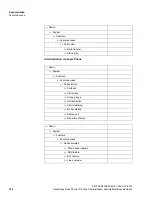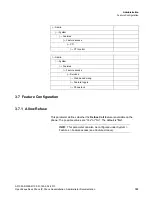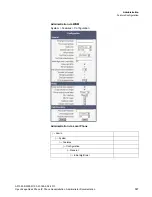
A31003-D3000-M100-01-76A9, 02-2013
OpenScape Desk Phone IP, Phone Administration, Administrator Documentation
95
Administration
System Settings
between the survivability proxy and the SIP server breaks down, e. g.
because of server failure, the survivable proxy itself acts as a replacement for
the primary SIP server. Vice versa, in case the phone can not reach the
survivability proxy itself, it will register directly with the primary SIP server,
provided that it is specified in the DNS SRV server list.
The survivability proxy notifies the phone whenever the survivability changes,
so it can indicate possible feature limitations to the user. Furthermore, to
enhance survivability, the phone will be kept up-to-date about the current
survivability state even after a restart.
Another way to realize survivability is the use of multiple, geographically
separated SIP servers. Normally, the phone is registered with that server that
has the highest priority in the DNS SRV server list. If the highest priority server
fails to respond to the TLS connectivity check (see
Connectivity Check
), the
phone will register with the server that has the second highest priority.
2. Use of a Backup SIP Server. Along with the registration at the primary SIP
server, the phone is registered with a backup SIP server. In normal operation,
the phone uses the primary server for outgoing calls. If the phone detects that
the connection to the primary SIP server is lost, it uses the backup server for
outgoing calls. This connection check is realized by 2 timers; for details, see
Response Timer
and
Non-INVITE Transaction Timer
. For configuring the
backup server, please refer to
Backup SIP Server
.
INFO:
In survivability mode, some features will presumably not
be available. The user will be informed by a message in the Call
View display.
Related Topics
3.5.9.1 Connectivity Check
A regular check ensures that the TLS link to the main SIP server is active. When
the
Connectivity check timer
is set to a non-zero value, test messages will be
sent at the defined interval. If the link is found to be dead, the phone uses DNS
SRV to find another SIP server. Certainly, the DNS SRV records must be properly
configured in the DNS server.
Value range: 0 (off), and 10 to 3600 sec.
If no other primary SIP server is found via DNS SRV, the phone will switch over
to a backup server for making receiving calls. For configuring the backup server,
please refer to
Backup SIP Server
.






























